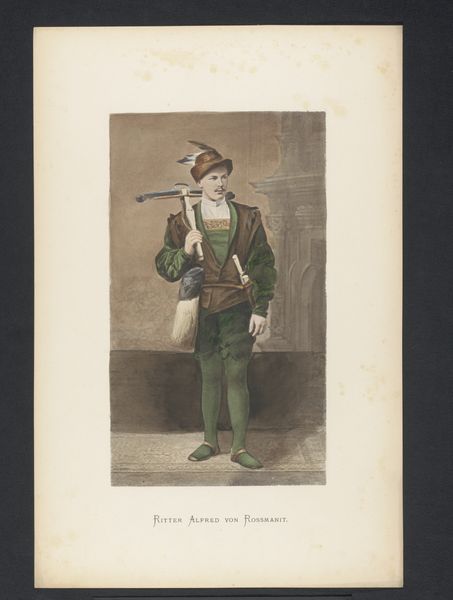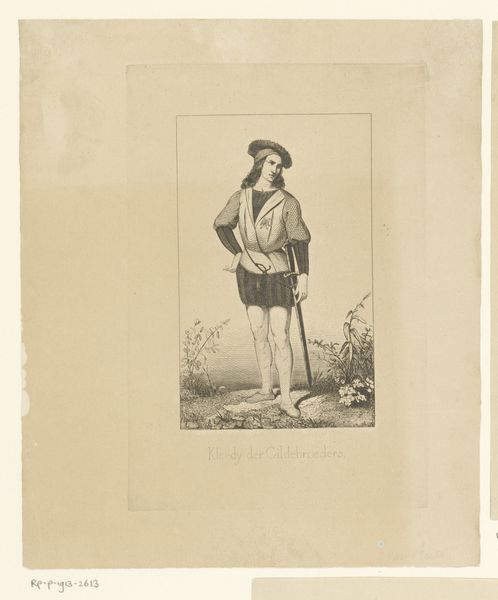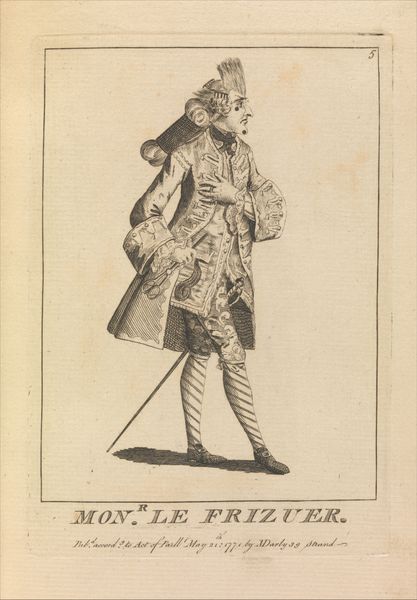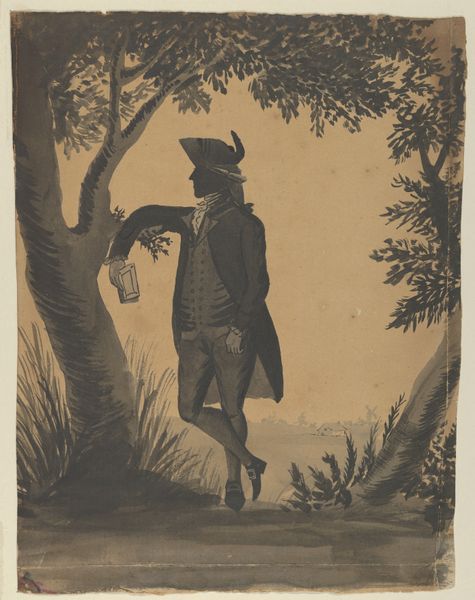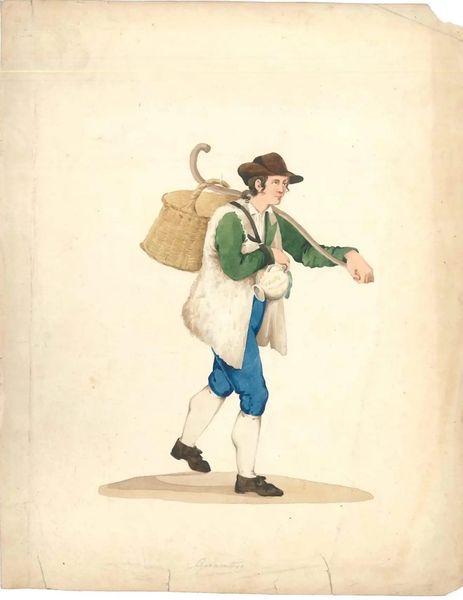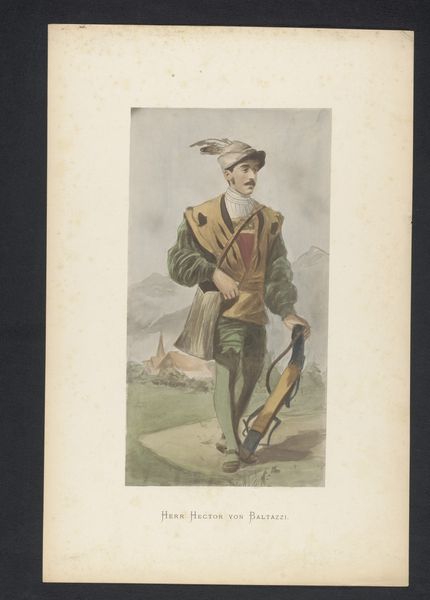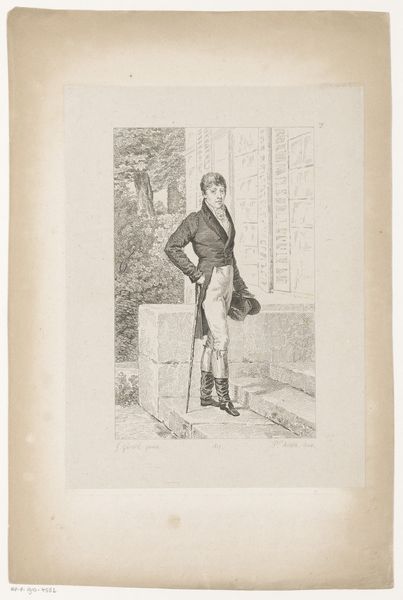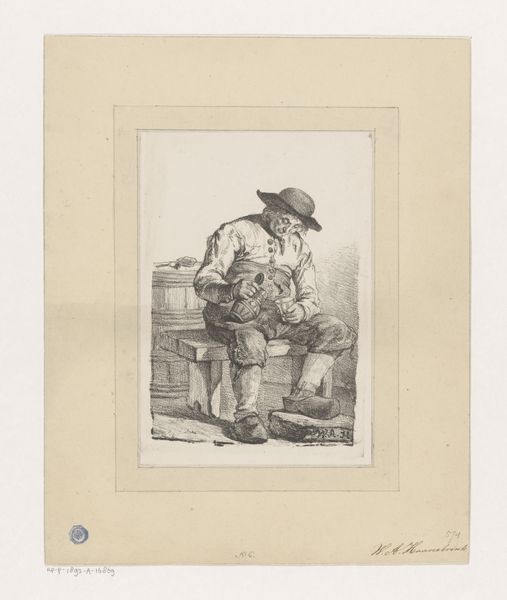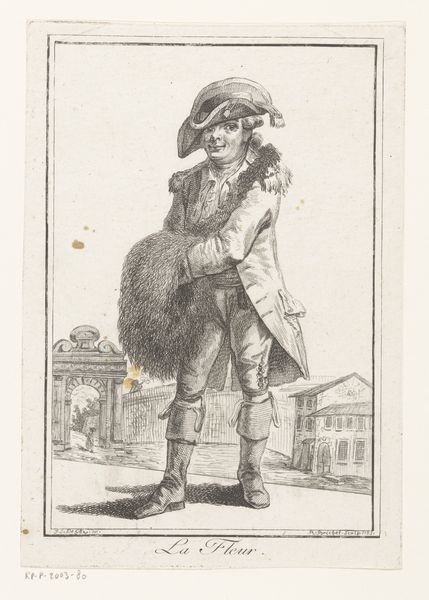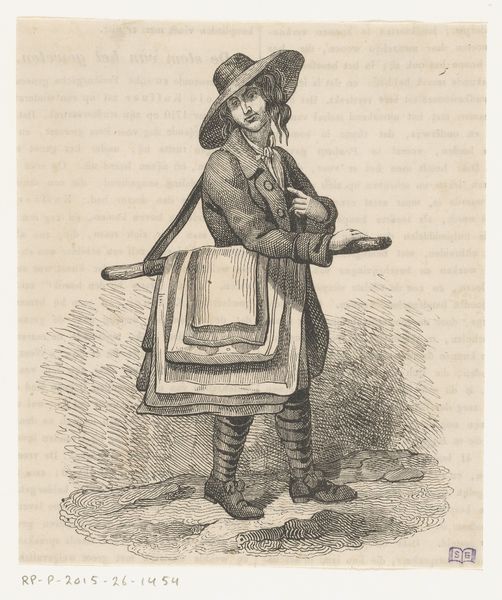
print, engraving
# print
#
figuration
#
romanticism
#
cityscape
#
genre-painting
#
engraving
Dimensions: height 374 mm, width 253 mm
Copyright: Rijks Museum: Open Domain
Editor: Here we have "Verkoper van gebak te Brussel," or "Seller of Pastries in Brussels," an engraving from 1825 by Guillaume Philidor Van den Burggraaff. It looks to be a genre scene with the cake vendor taking center stage in a sort of muted color palette. How do you interpret this work from a formal perspective? Curator: Examining the print closely, one observes how the artist utilizes line and form to create spatial depth. Note the vendor’s placement in the foreground, sharply rendered with clear outlines, which contrasts with the background, depicted with a softer focus. Editor: Yes, that’s very noticeable! Curator: The artist masterfully juxtaposes light and shadow to achieve depth, framing the subject by the archway and highlighting the vendor's stance. His offering hand, subtly foreshortened, directs our gaze. Observe, too, the detailed rendering of the basketry, its texture in stark contrast to the smooth planes of the building. The buildings have such austere geometric forms, do you think they highlight something by contrast? Editor: Maybe, yes. The curve of the basket versus the squares of the windows does create some movement and contrast. Curator: Precisely! It establishes a dynamic rhythm and compositional tension, essential components in appreciating this piece as a formal work of art. Also, consider the semiotic importance of pastries, an expensive indulgence at the time. Editor: Oh, I see. That’s not something I thought about originally, thank you. Curator: It becomes an aesthetic interplay of form, texture and line that evokes visual intrigue and artistic harmony. It all becomes an interplay of binaries in the context of everyday life. Editor: Thanks! That gives me a much deeper appreciation of the print as a unified whole.
Comments
No comments
Be the first to comment and join the conversation on the ultimate creative platform.
